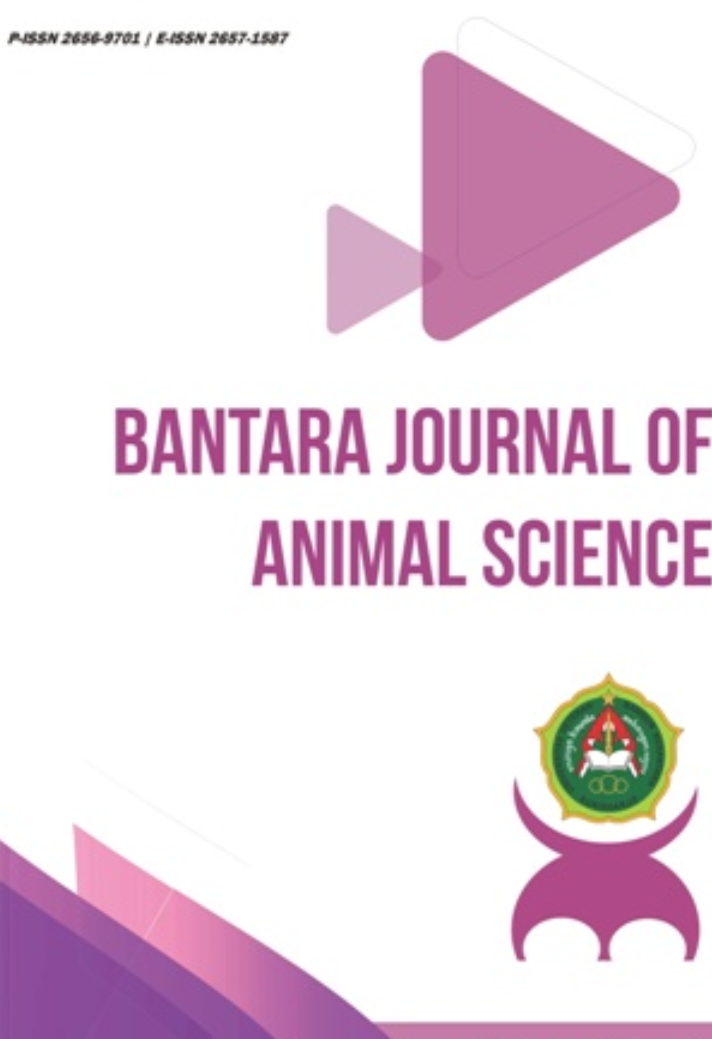The Use of Papaya (Carica papaya) Leaf Extract as a Natural Insecticide to Controlling Flies (Stomoxys sp.) in Cattle at Manokwari West Papua
DOI:
https://doi.org/10.32585/bjas.v4i1.2317Abstract
This study aims to determine the effect of using papaya leaf extract (Carica papaya) as a natural insecticide in controlling flies (Stomoxys sp.) and to determine its potential as a natural insecticide in terms of economic aspects. The results of this study can be a source of information and contribute to the handling of cage flies as vectors of disease spread in cattle that are environmentally friendly, inexpensive and easy to obtain. This research was conducted at Campus II of the Manokwari Agricultural Development Polytechnic Teaching Factory Unit, Anday. The material used 15 cattle which were grouped into 5 groups and each group consisted of 3 cattle. Each group was given negative control/clean water (P0), papaya leaf extract 100% (P1), papaya leaf extract 75% (P2), papaya leaf extract 50% (P3), and positive control or synthetic insecticide (P4). The method of using the treatment is by spraying it on the cattle on the neck and shoulders. The result showed that the treatment P4 had the longest resistance to being infested by flies compared to other treatments, followed by treatments P1, P2, P3, and P0. The most effective administration of papaya flies in cattle was treatment P1, because it had a lower fly perch than treatment P2, P3 and P0.
Downloads
References
Afriyanda, W., Hadi, U. K., & Soviana, S. (2019). Ragam Jenis dan Aktivitas Mengisap Darah Lalat Stomoxys spp di Peternakan Sapi Perah di Kabupaten Bogor. Acta VETERINARIA Indonesiana, 7(1), 37–45. https://doi.org/10.29244/avi.7.1.37-45
Akunne, C. E., Obiefuna, O. I., & Ononye, B. U. (2014). Lethal effects of Anarcadium occidentale (L.), Carica papaya (L.) and Azadirachta indica (A. Juss) leaf powders on Sitophilus oryzae (L.) in rice grains. Journal of Entomology and Zoology Studies, 2(6), 144–146.
Fajri, L., Heiriyani, T., & Susanti, H. (2017). Pengendalian Hama Ulat Menggunakan Larutan Daun Pepaya Dalam Peningkatan Produksi Sawi (Brassica juncea L.). Ziraa’ah, 42(1), 69–76.
Glio, M. T. (2017). Membuat Pestisida Nabati untuk Hidroponik, Akuaponik, Vertikultur dan Sayuran Organik. Jakarta: AgroMedia Pustaka.
Harborne, J. B., I. Sudiro, K. Padmawinata, S. N. (1996). Metode fitokimia : penuntun cara modern menganalisis tumbuhan. Bandung: ITB.
Hidayah, M. A. W., Zayadi, H., & Hayati, A. (2018). Uji Kombinasi Air Perasan Daun Mimba, Cengkeh, dan Pandan terhadap Daya Hinggap Lalat Kandang (Stomoxys calcitrans) pada Kulit Sapi. Biosaintropis (Bioscience-Tropic), 4(1), 38–44.
Julaily, N., & Rima Setyawati, T. (2013). Pengendalian Hama pada Tanaman Sawi (Brassica juncea L.) Menggunakan Ekstrak Daun Pepaya (Carica papaya L.). Jurnal Protobiont, 2(3), 171–175. Retrieved from https://jurnal.untan.ac.id/index.php/jprb/article/view/3889
Mulyana. (2002). Ekstraksi Senyawa Aktif Alkaloid, Kuinone, dan Saponin dari Tumbuhan Kecubung Sebagai Larvisida dan Insektisida Terhadap Nyamuk Aedes aegypti. Institut Pertanian Bogor.
Rahmat, H. (2009). Identifikasi Senyawa Flavonoid Pada Sayuran Indigenous Jawa Barat (Institut Pertanian Bogor). Retrieved from https://repository.ipb.ac.id/handle/123456789/11374
Rohma, M. F., & Wikanta, W. (2021). Pengaruh Ekstrak Daun Pepaya (Carica Papaya) Sebagai Pestisida Alami Terhadap Aktivitas Kecoa (Periplaneta Americana) Dan Pembelajarannya Pada Masyarakat. Jurnal Pedago Biologi Vol. 9 No. 1 April 2021, 1(2), 27–33.





